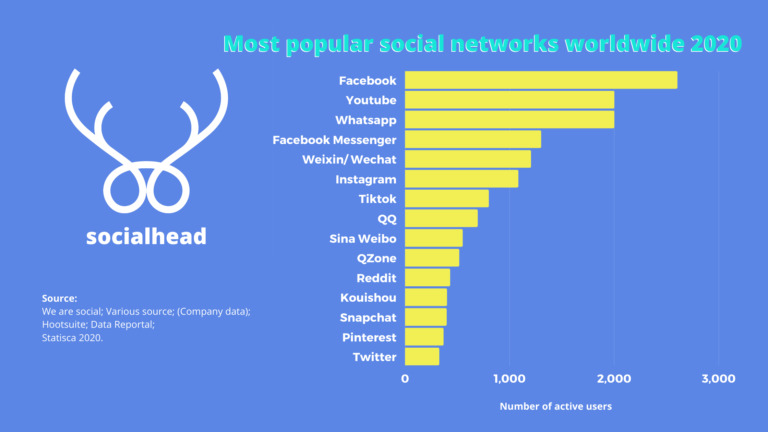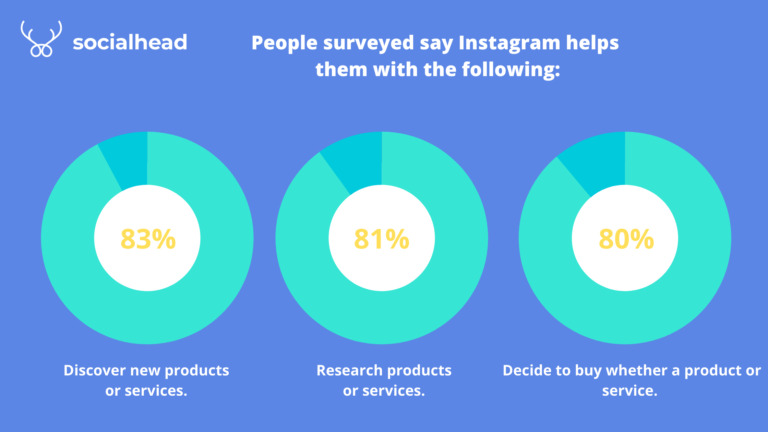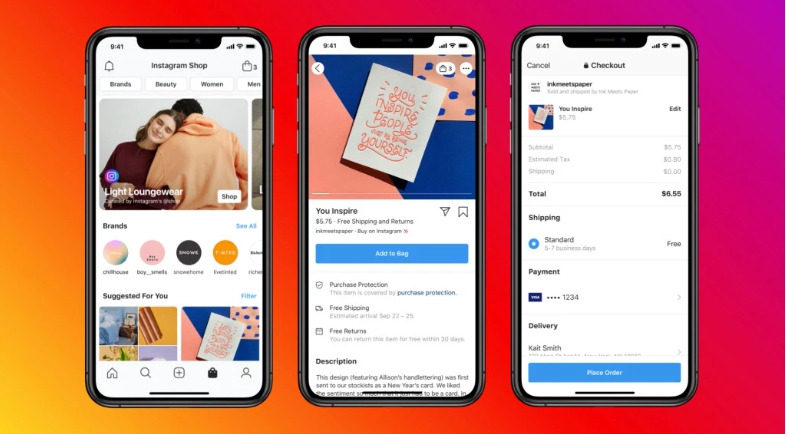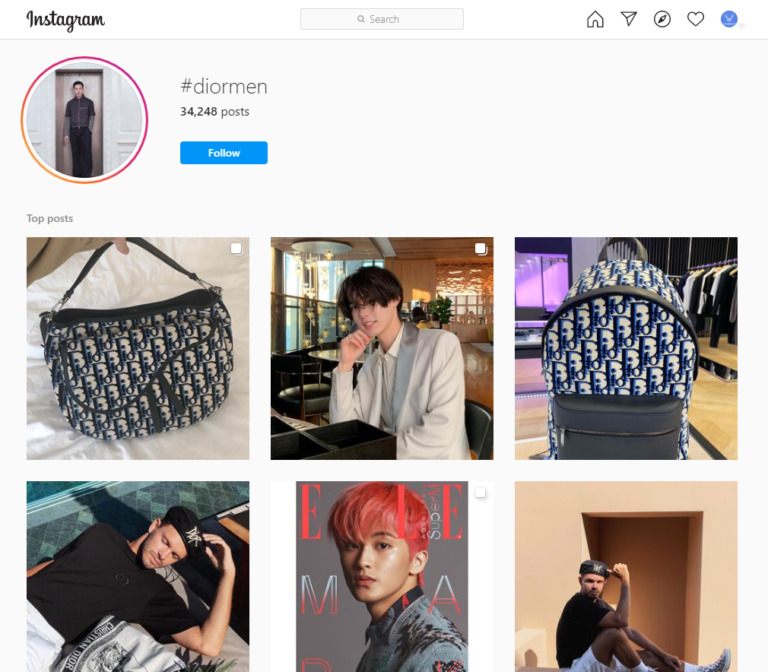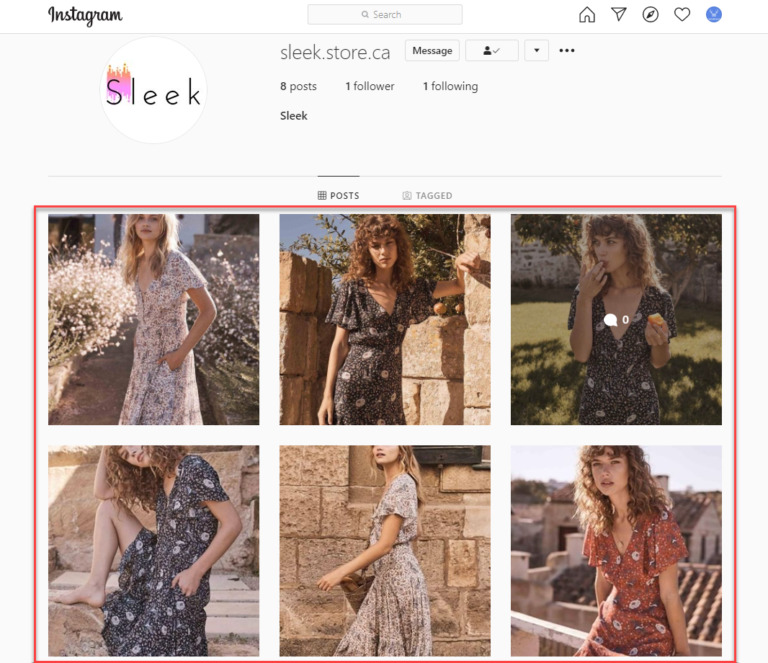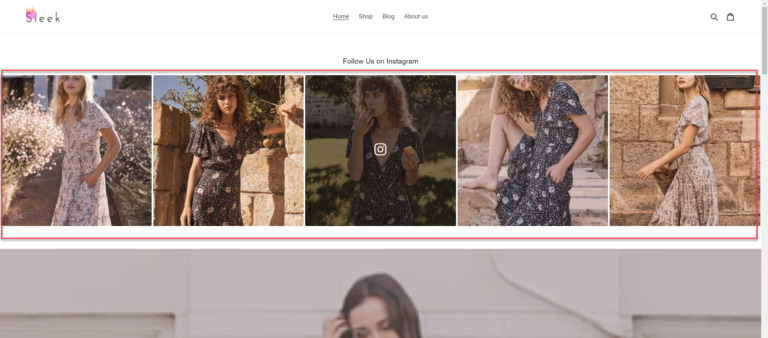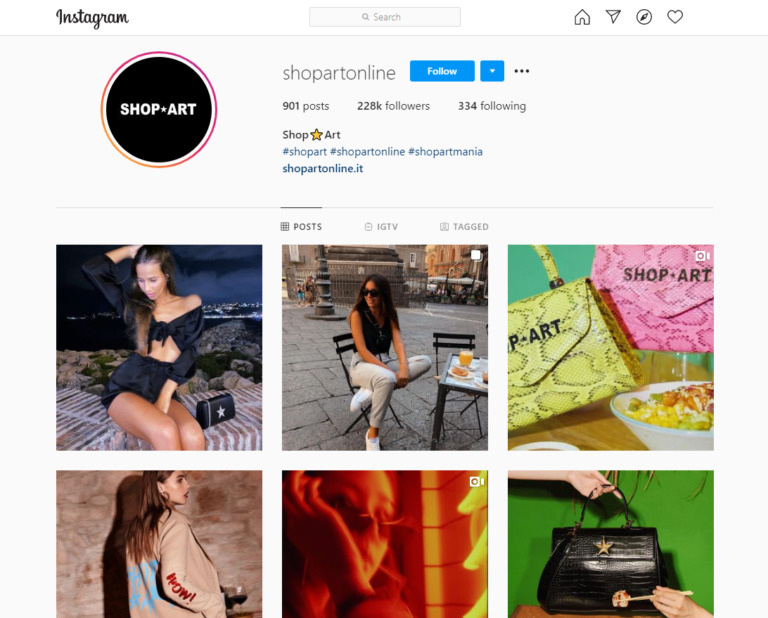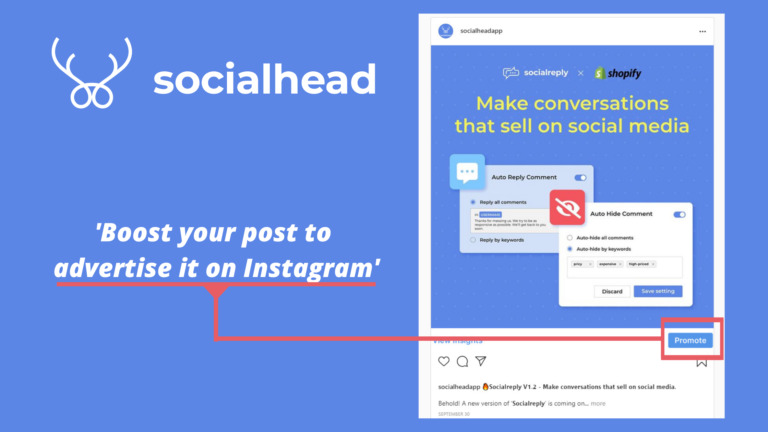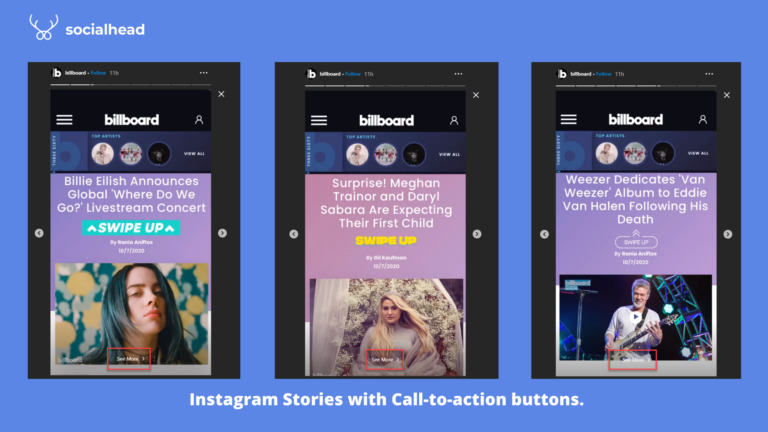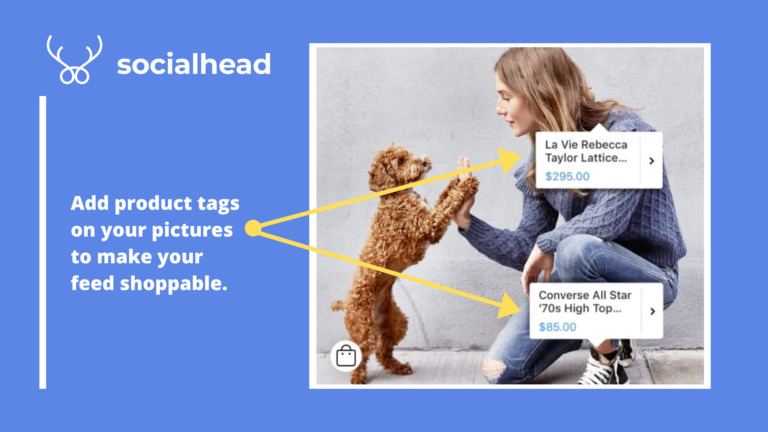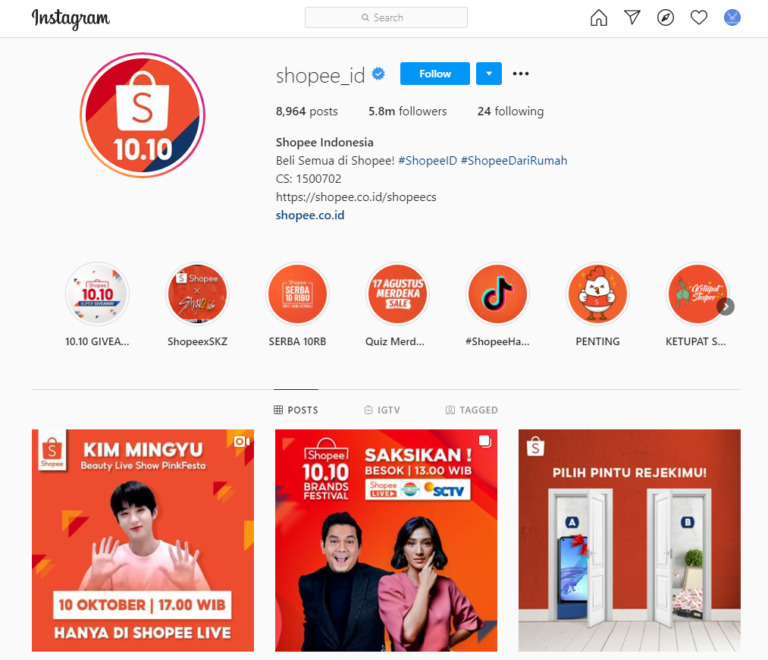Shopify Lite- What it is and When to Use it?
If you are interested in selling online, I assume that you’ve heard of Shopify with its various pricing options. And though Shopify’s Basic plan works for most businesses, it’s not a one-size-fits-all. What If everything you need is Shopify’s least expensive plan- Shopify Lite?
That’s why in this article, we’ll show you How Shopify Lite works and When you should be using It for your business.
Table of Contents
How does Shopify Lite work?
If you’re new to our blog, perhaps you might love to read about our Shopify Reviews first.
In a few words, Shopify Lite is the most affordable and lightweight package among the pricing plans Shopify offers. You can set up your product catalog to sell online (either on an existing website or social media)
That means the major difference between Shopify Lite and other regular pricing plans is that you do not have a brand-new website with a shopping cart. Instead, Shopify Lite integrates with previously built websites and social media platforms.
Thus, if you have a website at hand and now you want to sell some items on it, the Shopify Lite plan would enable you to keep that same blog and integrate all the products you want to sell on it.
Shopify Lite Pricing Plan
You might be surprised to know that Shopify Lite only costs you $9/month, which is 3 times cheaper than its next tier- Basic Shopify at $29 per month. Just like its other options, users will have a 14-day free trial with Shopify Lite before they decide whether to keep using it or upgrade to the Shopify regular pricing plans.
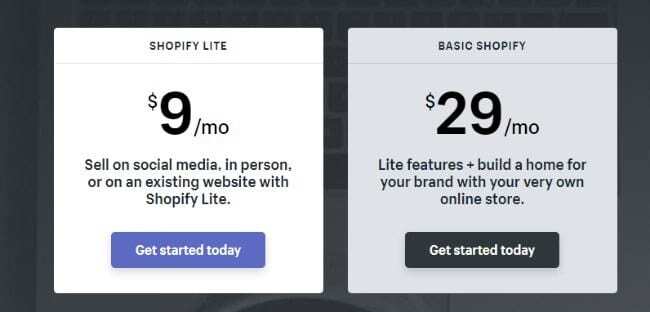
This pricing plan comes with eCommerce features for your website (WordPress, Square, Wix, etc.). Some of the basic features include Shopify Point-of-sale feature, a Buy Button embedded on your blog, the Overview Dashboard, and the Finances Report.
Though the Shopify Lite plan costs you $9/month, remember to factor in the so-called fee per sale. For in-person sales, Shopify Lite charges you 2.7% + $0.30 per sale. So for a $100 sale, you’d get $97. For online transactions, this fee goes up to 2.9% + $0.30 per sale triggered. So for the same $100 sale, you’d get a bit less money to keep at $96.80.
These fees, though seem small, can accumulate and eventually cost you a fortune if you process a lot of transactions. Thus, if you have a small scope business, Shopify Lite might be your muse.
Now for the main course, let us walk you through its major features, and well, after that, we’ll summarize its pros and cons for you to decide whether to use it or just stick around with Shopify’s regular pricing plans.
Shopify Lite Main Features
Despite its super cost-saving price, Shopify Lite can prove to be incredibly useful with many handy features to help online store owners boost their sales performance brilliantly.
Social Media Selling
Now supposing that you have a blog with massive traffic and a Facebook account with such a high engagement rate, Shopify Lite could a life-saver you’ve been searching for.
With Shopify Lite, you can own a comprehensively integrated Facebook Shop. That means you can sell on Facebook, convert Facebook users right in-app or run ads to direct them to your well-curated website, it’s totally up to you.
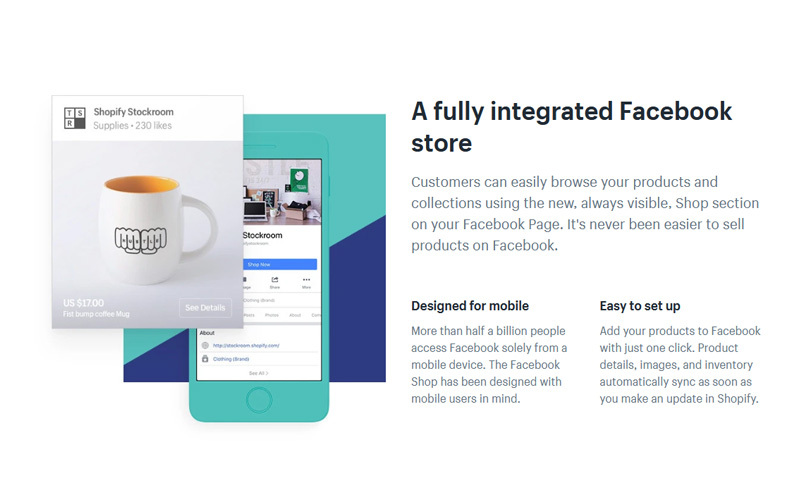
The great thing about this integration is that your potential customers do not have to leave Facebook to make a purchase; thus decreasing their steps and increasing your chances of converting. Plus, the checkout models that come along with the Shopify Lite plan are quite sleek and eye-catching.
More importantly and incredibly, all the products in your admin dashboard are automatically synced to the Facebook store. If you make a change to the product image, price, or description, the product info in your Facebook and blog are automatically updated accordingly. And that saves you a great deal of time which you can use for other matters.
Customer Support through Facebook Messenger
Since Shopify Lite is seamlessly integrated with Facebook Shop, you can sell on Messenger too. That means you not only get a Facebook store synced but also a Live Chat module to start the journey.
Take a look at this clip to understand more about how to sell via Messenger with Shopify Lite!
With this integration, your customers can browse your product catalog to make a purchase and simultaneously chat with you in real-time. That gives them a more personalized online shopping experience which will lead to higher trust and conversion rates eventually.
For instance, when a customer has an inquiry about a product he saw on your Facebook Shop, you can reply to him with the available data at your fingertips. What is incredible is that Shopify Lite live chat modules got you covered with all the CTA buttons you need such as Read Description, Choose Size (if you’re selling products of different shapes and sizes), etc.
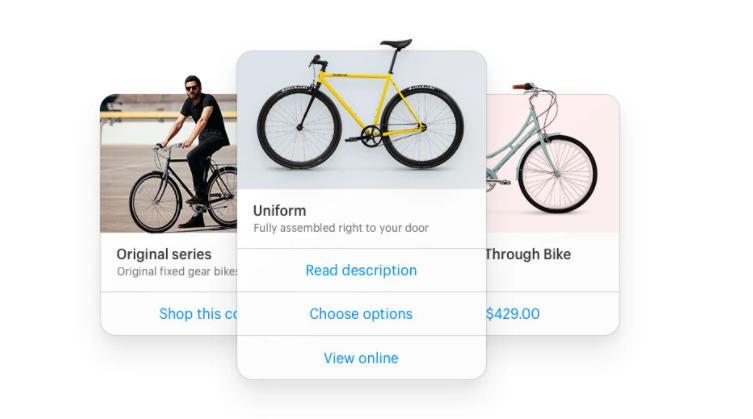
It is great that you’re always ready to chat with your customers anywhere and anytime in real-time. And the more awesome thing is that after the chat ends, your customers can check out right in their Messenger without having to switch to another site, making them rethink buying your products.
Create Invoices Easily
If your business specializes in wholesale, mobile, or custom orders, Shopify Lite might interest you then. This is a cost-effective way to create invoices and accept payments from your customers.
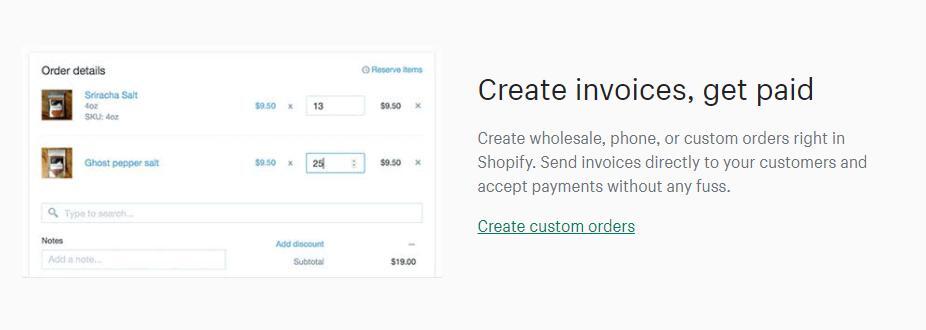
The process begins with creating a custom invoice then send it to the customers who will trigger the payment via the Shopify shopping cart. Generally, it’s not much different from other invoice tools. However, you can keep track of every sale without jumping between spreadsheets or accounting systems.
Plus, considering that you can sell online on a seamlessly integrated Facebook Shop and sell offline with its POS, Shopify Lite might be worth investing in.
Accept Credit card on-the-go
If you also want to sell your products in person, the Shopify Lite is perhaps your perfect resolution. Besides the basic functionalities for running an online store, you can totally sell offline with a swipe reader (for free).
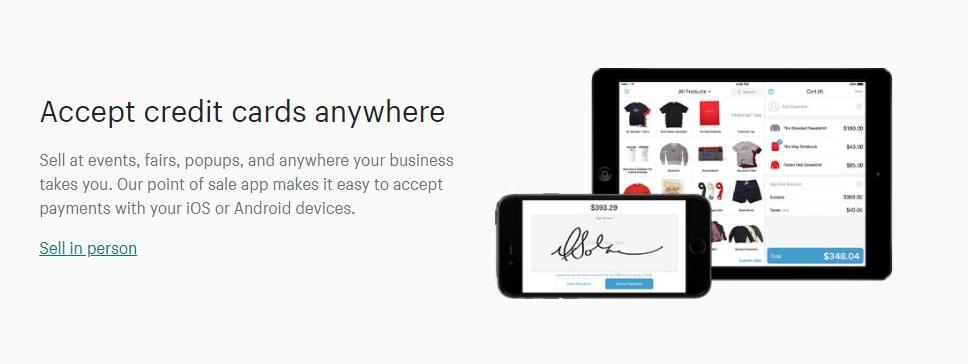
The ability to accept credit cards does matter for many businesses, particularly those attending trade or craft exhibitions. As you’ll almost certainly be selling online at some point and also hoping to earn some money on the road.
What’s awesome is you can manage your inventory across multiple channels in one central hub. All the products you’re selling can be synced to the Shopify admin dashboard; thus, cuts down on the time you need to keep tabs on those sorts of things.
Final words
In short, the cheapest Shopify plan will work well for you if you fall into one of the cases below:
- You already have a well-built website or a personal blog with high traffic and now want to merchandize on those popular sites
- Your business is in the cottage industry. And for that, you want to sell both online as well as offline at some points with the ability to accept credit cards
- You are a temporary seller who just wants to earn some money and quit the game afterward
- You want to exploit Facebook for selling in the association with Shopify’s cool Live Chat modules
Whether you like it or not, there are good reasons why Shopify Lite is there. We hope this article can help you to know how it works and figure out whether to use it for your business.
7 Brilliant Tips To Sell More On Instagram In 2021
How a Marketing Agency in California Can Transform Your Business
California is known for its vibrant economy, tech innovation, and diverse industries. To thrive in this competitive landscape, businesses need a cutting-edge marketing strategy. Partnering with a marketing agency in California can give you the expertise and tools to stand out.
Table of Contents
Why Choose a Marketing Agency in California?
California’s marketing agencies are at the forefront of industry trends. They understand the fast-paced nature of the market and have experience working with businesses across sectors, including tech, entertainment, retail, and hospitality. Here’s how they can add value to your business:
Localized Strategies:
Agencies in California are well-versed in the state’s diverse markets. Whether you’re targeting tech-savvy professionals in Silicon Valley or a lifestyle-conscious audience in Los Angeles, they craft campaigns tailored to specific demographics.
Comprehensive Services:
A marketing agency in California offers a wide range of services, such as:
- SEO and SEM to boost online visibility.
- Social media marketing to engage your audience on platforms like Instagram, TikTok, and LinkedIn.
- Content creation to tell your brand’s story effectively.
- Influencer partnerships to amplify your reach.
Access to Innovation:
Being in one of the world’s most innovative hubs, California agencies often leverage the latest tools and technologies to ensure your marketing efforts are data-driven and effective.
Delivering Results That Matter
Partnering with a marketing agency isn’t just about creating campaigns—it’s about delivering measurable outcomes. From increasing brand awareness to driving conversions, a California-based agency can align its strategies with your business goals.
If you’re looking to elevate your brand and succeed in one of the most dynamic markets in the world, a marketing agency in California can provide the expertise and support you need.
Take the next step in growing your business—connect with a local expert today!
Tradeshows Materials with Vibrant Graphics
Table of Contents
What Are The Retractable Banners
Looking to catch attention at your next event or trade show?
Retractable banners could be your new best friend. These eye-catching and portable displays are perfect for showcasing your brand, products, or services. Imagine a sleek, professional-looking banner that rolls up into a compact base, making setup and transportation a breeze.
Whether you’re a seasoned marketer or dipping your toes into event promotions, understanding how retractable banners can elevate your display game is essential. Let’s dive into what makes these banners so special and why they might be the perfect addition to your promotional toolkit.
What Are The Retractable Banners Used For
Retractable banners are incredibly versatile and serve multiple purposes. They are commonly used at trade shows, conferences, and expos to make brands stand out.
But their use doesn’t stop there! These banners are also perfect for retail promotions, point-of-sale displays, and product launches. Imagine walking into a store and immediately being drawn to a banner highlighting an exciting sale or new product.
Additionally, retractable banners are great for corporate meetings, press conferences, and public events. They offer a professional look while being easy to transport and set up, making them ideal for both large and small gatherings.
Educational institutions and nonprofits love them too! Whether it’s an open house or a charity event, these banners deliver your message with flair and simplicity.
In summary, if you need to convey information in a visually engaging yet portable manner, retractable banners are your go-to solution.
Can I Use Retractable Banners for My Tradeshows
Absolutely, you can—and should—use retractable banners for your tradeshows! They are designed to stand out and grab attention, making them perfect for busy environments.
One of the biggest advantages is their portability. These banners are lightweight and come with carrying cases, so transporting them to and from the event is hassle-free.
Setup is a breeze, too. You can have your display up in a matter of minutes without needing any special tools or skills. Just pull the banner up from its base, secure it, and you’re done!
Retractable banners also offer great flexibility in terms of design. You can feature high-resolution images, bold text, and vibrant colors that align with your brand’s identity. This ensures your booth not only looks professional but also inviting.
So, whether you’re debuting a new product or simply looking to increase brand awareness, retractable banners are a smart, effective choice for your tradeshow displays.
Are Retractable Banners Expensive
Not necessarily! One of the major perks of retractable banners is their cost-effectiveness. They come in a variety of price ranges, making them accessible for both big and small budgets.
You can find budget-friendly options that still offer good quality and durability. These are great for startups or small businesses looking to make a visual impact without breaking the bank. Imagine setting up a sleek, professional banner at your next trade show without having to worry about excessive costs.
Of course, if you’re looking for something more high-end, there are premium options with advanced features like higher-quality materials and sharper print resolution. These might be a bit pricier but are ideal for businesses wanting to make a luxurious impression or needing a banner that can withstand extensive use.
The best part is, regardless of your budget, retractable banners are a one-time investment. You can reuse them for different events, promotions, and settings, ensuring you get the most bang for your buck.
Additionally, many suppliers offer customization options, meaning you can get a banner tailored to your specific needs without a sky-high price tag. From luxurious finishes to budget-friendly basics, the options are truly versatile.
So, whether you’re a large corporation or a small local business, there’s a retractable banner out there that fits your needs and your budget. Investing in one means investing in a flexible, durable, and eye-catching promotional tool that you can use over and over again.
Where Do I Get My Retractable Banners
Getting your hands on a high-quality retractable banner is easier than you might think!
Go to Retractable Banner Printing By Image Square Printing They have an amazing selections of banner stands in stock. Many different designs and sizes to choose from. Standard style design, chrome ends design, double sided, electric and scrolling design and super wide 10 feet wide chrome ends design. Always in their inventory. Browse their amazing selections and choose the stand that fits your project. They offer offer customizable options, allowing you to upload your designs and choose materials and sizes that fit your needs.
If you’re attending trade shows or industry-specific events, Image Square Printing has an exclusive section just for your tradeshow printing materials. They often have deals and can offer tailored advice based on their expertise.
Happy banner shopping!
https://imagesquareprinting.com/product-category/trade-show-displays/
Tradeshows Materials with Vibrant Graphics
Table of Contents
What Are The Retractable Banners
A Beginner’s Guide to SEO for HVAC Companies
As an SEO specialist with extensive experience in helping businesses enhance their online presence, I understand the challenges HVAC companies face in a competitive market. In today’s digital world, having a robust online presence is essential for attracting new clients and staying ahead of the competition. Partnering with a specialized SEO company for HVAC like Upseo can be particularly effective in achieving these goals. Search Engine Optimization (SEO) is a powerful strategy to boost your visibility, drive organic traffic, and ultimately grow your HVAC business. This comprehensive guide aims to provide clear, straightforward, and practical advice on SEO for HVAC companies.
By incorporating targeted keyword research, optimizing on-page elements, and leveraging high-quality content, HVAC companies can significantly improve their search engine rankings. Focusing on local SEO, building authoritative backlinks, and continuously monitoring performance will ensure sustained success. Utilizing the expertise of an SEO company for HVAC, such as Upseo, can streamline this process, providing insights and strategies tailored to your specific needs. This holistic approach attracts potential clients and builds trust and credibility, paving the way for long-term business growth and customer retention.
Now, let’s dive into effective SEO strategies designed for HVAC companies.
Table of Contents
Understanding SEO and Its Importance
What is SEO?
SEO, or Search Engine Optimization, involves optimizing your website and online content to rank higher in search engine results. By implementing effective SEO strategies, you can ensure that your HVAC company appears prominently when potential clients search for heating, ventilation, and air conditioning services.
Why SEO Matters for HVAC Companies
-
Increased Online Visibility: A well-optimized HVAC website will appear higher in search engine results, increasing your visibility to potential customers searching for HVAC services.
-
Targeted Traffic: SEO allows you to target specific keywords and phrases that your potential clients use, ensuring the traffic to your site is highly relevant and more likely to convert.
-
Building Trust and Credibility: High search engine rankings build trust and credibility. Potential customers are likelier to trust businesses that appear at the top of search results.
-
Cost-Effective Marketing: Unlike traditional advertising methods, SEO offers long-term benefits with ongoing traffic and lead generation without continuous investment in paid campaigns.
Essential SEO Strategies for HVAC Companies
1. Comprehensive Keyword Research
Keyword research is the foundation of any successful SEO campaign. It involves identifying the keywords and phrases your potential customers use when searching for HVAC services.
How to Conduct Keyword Research:
-
Use Tools: Utilize tools like Google Keyword Planner, Ahrefs, and SEMrush to find relevant keywords with high search volume and low competition.
-
Focus on Long-Tail Keywords: Long-tail keywords are more specific and indicate a higher hiring intent. Examples include “emergency HVAC repair in [city]” or “best HVAC maintenance services near me.”
-
Analyze Competitors: Look at the keywords your competitors are targeting to identify opportunities for your HVAC company.
2. On-Page SEO Optimization
On-page SEO involves optimizing various elements within your website to improve its search engine ranking.
Critical On-Page SEO Tactics:
-
Title Tags and Meta Descriptions: Ensure your title tags and meta descriptions are keyword-rich, compelling, and accurately describe the content on your pages.
-
Header Tags (H1, H2, H3): Use header tags to structure your content logically and include relevant keywords.
-
URL Structure: Create clean, descriptive URLs that include target keywords.
-
Internal Linking: Use internal links to connect related pages on your site, improving navigation and spreading link equity.
-
Mobile Optimization: Ensure your website is mobile-friendly, providing a seamless experience across all devices.
3. High-Quality Content Creation
Creating valuable and relevant content is crucial for engaging visitors and attracting backlinks from other reputable sites.
Effective Content Strategies:
-
Blog Posts: Write informative blog posts that address common HVAC questions or concerns. Examples include “How to Choose the Right HVAC System for Your Home” or “Top Signs Your HVAC System Needs Repair.”
-
Guides and FAQs: Develop comprehensive guides and FAQ pages that provide in-depth information on HVAC topics.
-
Customer Testimonials and Case Studies: Share positive customer experiences and case studies to build trust and credibility.
4. Local SEO
Local SEO is vital for HVAC companies, as most customers will search for services within a specific geographic area.
Enhancing Local SEO:
-
Google My Business (GMB): Claim and optimize your Google My Business profile. Ensure your business name, address, phone number (NAP), and business hours are accurate.
-
Local Directories: List your business on local directories such as Yelp, Angie’s List, and local Chambers of Commerce.
-
Localized Content: Create content tailored to your local audience, such as blog posts about regional HVAC needs or community involvement.
-
Get Reviews: Encourage satisfied customers to leave positive reviews on your GMB and other review platforms to enhance your local reputation.
5. Link Building
Building high-quality backlinks from authoritative websites can significantly improve your authority and search rankings.
Effective Link Building Techniques:
-
Guest Blogging: Write guest posts for reputable industry blogs and include links to your site.
-
Partnerships and Sponsorships: Partner with local businesses and organizations for mutual backlinks and sponsor community events to earn links from event websites.
-
Content Marketing: Create shareable content, such as infographics or industry reports, that others find valuable enough to link to.
6. Monitor and Analyze Performance
Regularly monitoring and analyzing your SEO performance is essential for making data-driven decisions and ongoing improvements.
How to Monitor SEO Performance:
-
Analytics Tools: Use tools like Google Analytics, Google Search Console, and other SEO software to track key metrics such as organic traffic, keyword rankings, and conversion rates.
-
Performance Reports: Create regular performance reports to identify which strategies are working and where adjustments are needed.
-
Continuous Improvement: Adjust your SEO efforts based on performance data to ensure you consistently move toward your business goals.
Case Study: Successful SEO Campaign for an HVAC Company
Let’s examine a case study of a successful SEO campaign for a local HVAC company that aims to increase its online visibility and attract more clients.
The Approach:
-
Keyword Optimization: The SEO team conducted thorough keyword research and optimized the website for high-converting keywords such as “24/7 HVAC repair in [city]” and “licensed HVAC technicians near me.”
-
Local SEO: The company’s Google My Business profile was fully optimized, and the business was listed on various local directories. The SEO team also created localized content, including blog posts about regional HVAC maintenance tips.
-
Content Creation: High-quality blog posts, guides, and customer testimonials were developed to provide value and attract organic traffic.
-
Link Building: The team acquired backlinks from reputable industry sites, local business associations, and community organizations, enhancing the site’s authority.
The Results:
-
Increased Visibility: The HVAC company’s website saw a 65% increase in organic traffic within six months.
-
Higher Rankings: The site ranked on the first page of Google for several high-converting keywords.
-
Lead Generation: There was a 50% increase in potential clients’ online inquiries and service requests.
-
Business Growth: The HVAC company experienced significant growth, with a notable increase in new clients and completed projects.
Conclusion
A robust SEO strategy is essential for HVAC companies https://www.upseo.com/seo-company/seo-company-for-hvac to establish a solid online presence, attract qualified leads, and achieve long-term growth. HVAC providers can significantly enhance their visibility and credibility in the digital landscape by focusing on comprehensive keyword research, on-page optimization, high-quality content creation, local SEO, link building, and continuous performance monitoring.
As an SEO specialist, I recommend investing in a tailored SEO strategy that aligns with your business goals and addresses the unique needs of the HVAC industry. A well-executed SEO plan can elevate your HVAC company, build trust with potential clients, and drive sustained success in a competitive market.
10 Reasons to Hire a Professional Web Development Service for Your WordPress Site
Creating a website is a significant undertaking, and while the DIY approach may seem appealing, hiring a professional web development service to build your WordPress site can offer substantial benefits. Here are ten reasons why opting for professional web development is often the better choice.
Table of Contents
1. Expertise and Experience
Professional WordPress developers bring a wealth of expertise and experience to the table. They deeply understand WordPress’s features, themes, plugins, coding languages (CSS, Javascript, PHP), and the latest industry trends. This expertise allows them to create websites that are visually appealing but also functional and efficient. Their experience handling various projects means they can anticipate and solve problems that might stump a DIYer.
2. Customization and Uniqueness
One of the main advantages of hiring a professional is the ability to create a truly unique WordPress site tailored to your specific needs. Professionals can develop custom themes and plugins that set your site apart from competitors. While DIY website builders offer templates, they often result in generic-looking websites that lack the personalized touch a professional can provide.
3. Time Efficiency
Building a WordPress site from scratch takes time, especially if you are unfamiliar with web development. By hiring a professional, you can save valuable time and focus on other aspects of your business. Professionals work efficiently and can complete projects faster than someone learning as they go. This time efficiency is crucial for businesses that need to get online quickly.
4. Search Engine Optimization (SEO)
A professionally developed WordPress site will likely rank higher in search engine results. Web developers understand the importance of SEO and can implement best practices from the start. They can optimize your site’s structure, load times, and content, ensuring that search engines can easily crawl and index your pages. This expertise can lead to better visibility and increased traffic for your site.
5. Mobile Responsiveness
In today’s digital age, having a mobile-responsive website is a no-brainer. Professional web developers ensure your WordPress site looks and functions well on all devices, from desktops to smartphones. They use responsive design techniques to create a seamless user experience, regardless of the device used. DIY solutions may not always provide the same level of responsiveness and adaptability.
6. Security and Reliability
Security is a major concern for any website. Professionals implement robust security measures to protect your WordPress site from threats such as hacking and malware. They stay updated with the latest security practices and can quickly address vulnerabilities. Additionally, professional developers ensure your website is reliable and performs well under various conditions, providing a smooth user experience.
7. Access to Advanced Tools and Technologies
Web development professionals can access advanced tools and technologies that may be out of reach for DIYers. These tools allow them to create sophisticated websites with enhanced functionalities. They can integrate third-party services, such as payment gateways and customer relationship management (CRM) systems, to provide a more comprehensive solution for your business needs.
8. Ongoing Support and Maintenance
Websites require ongoing maintenance and updates to ensure they remain functional and secure. Professional web development services often include support and maintenance packages, providing peace of mind that your site will be well-maintained. DIY solutions may leave you struggling to address technical issues and updates, which can be time-consuming and stressful.
9. Professional Design and Branding
A professional-looking website is a must for establishing credibility and trust with your audience. Web developers work with designers to create visually appealing sites that align with your brand identity. They ensure the design elements, color schemes, and typography reflect your brand’s personality and values. This professional touch can significantly affect how your business is perceived.
10. Better User Experience
Ultimately, a website’s success depends on its user experience. Professional web developers prioritize user experience, creating intuitive navigation, fast load times, and engaging content. They use user-centered design principles to ensure visitors can easily find what they want and interact positively with your site. A better user experience leads to higher engagement, longer visit durations, and increased conversions.
The Long-Term Value
While DIY website builders can be tempting for their cost-effectiveness and simplicity, the benefits of hiring a professional web development service for your WordPress site far outweigh the initial investment. Professionals bring expertise, customization, and efficiency that are difficult to achieve independently. They ensure your website is optimized for search engines, mobile-friendly, secure, and provides an excellent user experience. By choosing to work with a professional, you can focus on growing your business while leaving the complexities of web development to the experts. In the long run, a professionally developed WordPress site can lead to better performance, higher traffic, and greater success for your business.
The Ultimate Guide to Using Website Traffic Generators for Increased Engagement
In today’s competitive digital landscape, website traffic is the lifeblood of online success. As an SEO specialist, you know that driving traffic to your website is essential for building your brand, capturing leads, and growing your business. To achieve these goals, leveraging a website traffic generator can be a game-changer. This guide will walk you through everything you need to know about using website traffic generators to increase engagement, providing practical tips and insights for effective implementation.
Table of Contents
What Are Website Traffic Generators?
Website traffic generators are tools and strategies designed to drive visitors to a website. These generators can vary from automated software programs to specific marketing techniques. The main goal of using traffic generators is to increase the number of visits to a website, thereby improving visibility, engagement, and, ultimately, conversions.
The Importance of Increased Engagement
Before diving into the different types of traffic generators, it’s essential to understand why engagement matters. Increased engagement means that visitors are not just landing on your site but are actively interacting with your content. High engagement levels can lead to:
-
Better SEO Rankings: Search engines favor websites with high engagement metrics, such as low bounce rates and longer session durations.
-
More Conversions: Engaged visitors are more likely to convert into customers, subscribers, or leads.
-
Brand Loyalty: Engaged users are more likely to return to your site and become loyal followers.
Top Website Traffic Generators for Increased Engagement
1. Google My Business
Overview: Google My Business (GMB) is a free tool that allows businesses to manage their online presence across Google Search and Maps. Optimizing your GMB profile can significantly increase your local traffic and engagement.
How It Works:
-
Verification: Claim and verify your business on GMB.
-
Profile Optimization: Add accurate business information, photos, posts, and updates.
-
Customer Engagement: Respond to reviews and interact with your audience.
Benefits:
-
Local SEO Boost: Improved visibility in local search results.
-
Enhanced Credibility: Builds trust with potential customers.
-
Increased Engagement: Encourages interactions with your business.
Example Use Case: A local coffee shop can optimize its GMB profile with updated photos, menus, and customer reviews, driving more traffic and engagement from nearby users searching for a place to grab a coffee.
2. Social Media Platforms
Overview: Social media platforms like Facebook, Twitter, Instagram, and LinkedIn are powerful tools for driving traffic and increasing engagement. By sharing engaging content and interacting with users, you can build a solid online presence.
How It Works:
-
Content Sharing: Post links to your website’s content, such as blog posts, videos, and product pages.
-
Engagement: Interact with followers through comments, likes, shares, and direct messages.
-
Hashtags: Use relevant hashtags to reach a broader audience.
Benefits:
-
Broader Reach: Connect with a large audience across various social media platforms.
-
User Engagement: Foster relationships with potential customers.
-
Brand Awareness: Increase your brand’s visibility and recognition.
Example Use Case: A fashion brand shares new product launches and styling tips on Instagram, using hashtags to reach fashion enthusiasts and drive traffic to its online store.
3. Content Marketing
Overview: Content marketing involves creating and distributing valuable, relevant, and consistent content to attract and retain a target audience. High-quality content can drive significant organic traffic and engagement to your website.
How It Works:
-
Content Creation: Write blog posts, articles, infographics, videos, and more.
-
SEO Optimization: Use relevant keywords and optimize content for search engines.
-
Promotion: Share your content across various channels, including social media and email newsletters.
Benefits:
-
Organic Traffic: Attracts visitors through search engines.
-
Authority Building: Establishes your brand as an industry expert.
-
Audience Engagement: Keeps your audience informed and engaged.
Example Use Case: A tech company publishes in-depth blog posts about the latest industry trends, driving organic traffic from users searching for tech news and insights.
4. Email Marketing
Overview: Email marketing remains one of the most effective ways to drive traffic and engagement. Building an email list and sending regular newsletters can keep your audience engaged and encourage repeat visits.
How It Works:
-
List Building: Collect email addresses through sign-up forms on your website.
-
Newsletter Creation: Design engaging newsletters with links to your latest content.
-
Segmentation: Send targeted emails based on user interests and behavior.
Benefits:
-
Direct Engagement: Reach your audience directly in their inbox.
-
Personalization: Tailor content to specific audience segments.
-
Repeat Traffic: Regular newsletters drive consistent traffic to your site.
Example Use Case: An online magazine sends weekly newsletters featuring its latest articles, driving traffic from subscribers interested in various topics.
5. Quora
Overview: Quora is a question-and-answer platform where users seek expert advice on various topics. By providing insightful answers and linking back to your website, you can attract targeted traffic and increase engagement.
How It Works:
-
Profile Setup: Create a comprehensive profile highlighting your expertise.
-
Answering Questions: Provide detailed answers to relevant questions in your niche.
-
Linking: Include links to your website’s relevant content for further reading.
Benefits:
-
Targeted Traffic: Attract visitors interested in your industry or niche.
-
Authority Building: Establish yourself as an expert in your field.
-
SEO Benefits: Gain backlinks from a reputable platform.
Example Use Case: A fitness coach answers questions about workout routines on Quora, linking to detailed blog posts on their website driving traffic from users seeking fitness advice.
6. Reddit
Overview: Reddit is a popular platform with numerous communities (subreddits) dedicated to various topics. Participating in relevant subreddits and sharing valuable content can drive traffic and engagement.
How It Works:
-
Join Subreddits: Find and join subreddits related to your niche.
-
Engage: Participate in discussions and share relevant content.
-
Respect Community Rules: Follow subreddit guidelines to avoid being flagged as spam.
Benefits:
-
Targeted Traffic: Reach a specific audience interested in your niche.
-
Community Engagement: Build relationships with potential customers.
-
Feedback: Gain insights and feedback from community members.
Example Use Case: A software developer shares articles about coding best practices in programming subreddits, driving traffic from users interested in software development.
7. Guest Blogging
Overview: Guest blogging involves writing articles for other websites in your industry. By contributing valuable content and including backlinks to your website, you can reach new audiences and drive engagement.
How It Works:
-
Research: Identify reputable blogs and websites in your niche that accept guest posts.
-
Pitch Ideas: Propose relevant topics that align with the host site’s audience.
-
Write Quality Content: Create valuable and engaging articles with links to your website.
Benefits:
-
Audience Exposure: Reach new readers interested in your niche.
-
Backlinks: Gain high-quality backlinks to improve your SEO.
-
Authority Building: Establish yourself as an industry expert.
Example Use Case: An SEO specialist writes guest posts about the latest SEO trends for popular marketing blogs, driving traffic and building credibility.
8. YouTube
Overview: YouTube is the world’s largest video-sharing platform. Creating and sharing engaging videos related to your niche can drive traffic to your website through video descriptions and links.
How It Works:
-
Create a Channel: Set up a YouTube channel focused on your niche.
-
Produce Videos: Create informative and entertaining videos that add value to your audience.
-
Include Links: Add links to your website in video descriptions and end screens.
Benefits:
-
Broad Reach: Access a vast audience through video content.
-
Engagement: Foster a community through comments and interactions.
-
SEO Benefits: Improve your site’s SEO with backlinks from a reputable platform.
Example Use Case: A travel blogger creates destination guides and travel tips videos, including links to their blog for more detailed information.
9. SlideShare
Overview: SlideShare is a platform for sharing presentations, infographics, and documents. Creating valuable slide decks and linking to your website can drive traffic from professionals and industry peers.
How It Works:
-
Create Presentations: Design informative and visually appealing presentations.
-
Upload to SlideShare: Share your presentations on SlideShare with links to your website.
-
Promote: Share your SlideShare content on social media and other channels.
Benefits:
-
Professional Audience: Reach a targeted audience of professionals and industry experts.
-
Backlinks: Gain backlinks to improve your SEO.
-
Content Repurposing: Repurpose existing content into slide decks.
Example Use Case: A marketing agency shares presentations on the latest digital marketing trends, including links to their blog for more in-depth articles.
10. Medium
Overview: Medium is a free blogging platform that allows you to publish and share content with a broad audience. Republishing your blog posts on Medium can reach new readers and drive traffic to your website.
How It Works:
-
Create an Account: Sign up and create a profile on Medium.
-
Republish Content: Post your existing blog content on Medium, including links back to your website.
-
Engage with Readers: Respond to comments and interact with followers.
Benefits:
-
Extended Reach: Tap into Medium’s existing readership.
-
SEO Benefits: Gain backlinks to your website.
-
Content Promotion: Promote your content to a broader audience.
Example Use Case: A health and wellness blog republishes articles on Medium, reaching new readers interested in fitness and wellness tips and driving traffic back to the main blog.
Conclusion
Leveraging website traffic generators can significantly boost your site’s visibility and engagement. By utilizing tools like Google My Business, social media platforms, content marketing, email marketing, Quora, Reddit, guest blogging, YouTube, SlideShare, and Medium, you can drive targeted and engaged traffic to your website without spending a fortune.
As an SEO specialist, it’s essential to integrate these traffic generation strategies into your overall marketing plan. Focus on providing value to your audience, engaging with them authentically, and maintaining ethical standards in all your efforts. By doing so, you can achieve sustainable growth and long-term success in the competitive digital landscape.
SEO vs. Google Ads for E-commerce: Building a Sustainable Traffic Powerhouse
In the cutthroat world of e-commerce, attracting customers and driving sales is an ongoing battle. While both SEO for e-commerce (Search Engine Optimization) and Google Ads offer powerful tools, the strategic use of SEO provides a distinct edge for long-term success. This article delves into the advantages of SEO for e-commerce, highlighting its superiority over paid advertising in building a sustainable traffic powerhouse.
Table of Contents
The Power of Organic Visibility
SEO revolves around optimizing your website and content to rank organically on search engine results pages (SERPs). When someone searches for a product or service related to your offerings, your website appears prominently without the need for a paid placement. This organic visibility translates to several key advantages:
-
Cost-Effectiveness: Unlike Google Ads, where you pay for every click, SEO offers a cost-effective way to attract potential customers. Once you’ve invested the time and effort in optimizing your website, the organic traffic keeps flowing without additional per-click fees.
-
Long-Term Sustainability: SEO efforts build momentum over time. As your website ranking improves, you attract more organic traffic consistently. This creates a sustainable traffic pipeline that continues to deliver results even if you adjust your SEO strategy.
-
Increased Brand Credibility: Ranking high on SERPs lends legitimacy and trust to your brand. Consumers perceive websites positioned at the top of search results as reliable and authoritative sources, increasing the likelihood of them converting into customers.
-
Targeted Audience: SEO allows you to target specific keywords relevant to your products and services. This ensures your website reaches the right audience – people actively searching for what you offer, maximizing the potential for conversions.
-
Improved User Experience: SEO best practices often overlap with creating a user-friendly website. Optimizing page loading speed, mobile responsiveness, and content structure not only improves search engine ranking but also enhances the overall user experience, encouraging visitors to explore further and convert.
SEO vs. Google Ads: A Tale of Two Strategies

While Google Ads offers undeniable benefits like immediate visibility and targeted campaigns, it comes with limitations:
-
Costly: The cost of Google Ads can quickly add up, especially for competitive keywords. You constantly need to monitor and adjust your campaigns to maintain a positive return on investment (ROI).
-
Short-Term Focus: Once your ad budget runs out, the traffic flow stops. Google Ads is a great way to launch a new product or run a seasonal promotion, but it doesn’t build long-term brand recognition or organic traffic.
-
Dependence on Platform: You’re beholden to Google’s algorithm and advertising policies. Changes to the platform or increased competition can significantly impact your campaign performance.
Building Your SEO Fortress
Here are some key SEO strategies to implement for your e-commerce website:
- Keyword Research: Identify high-volume, low-competition keywords relevant to your products and target audience. Integrate these keywords naturally into your product descriptions, page titles, and website content.
- Content Marketing: Create high-quality, informative content that educates, entertains, and engages your audience. Blog posts, product reviews, buying guides, and informative articles all provide valuable content for users and search engines alike.
- On-Page Optimization: Optimize your website’s technical structure, page loading speed, and mobile responsiveness. Ensure your product pages are well-structured, easy to navigate, and contain relevant meta descriptions and title tags.
- Link Building: Earn backlinks, or links from high-authority websites, to your website. Backlinks signal to search engines that your website is trustworthy and relevant, boosting your ranking potential.
- Local SEO (if applicable): If you have a brick-and-mortar store or offer local services, optimize your website for local searches. Claim your Google My Business listing, ensure your NAP (Name, Address, Phone Number) is consistent across the web, and build local citations to improve local search visibility.
SEO: A Continuous Journey
SEO is not a one-time fix. Search engine algorithms constantly evolve, and new competitors emerge. Maintaining a top ranking requires ongoing efforts:
- Stay Updated on Algorithm Changes: Keep yourself informed about the latest SEO trends and algorithm updates from search engines like Google.
- Regular Content Creation: Regularly publish fresh, informative content to keep your website active and relevant to search engines and users alike.
- Performance Monitoring: Track your website’s SEO performance through analytics tools. Measure key metrics like organic traffic, keyword rankings, and conversion rates to identify areas for improvement.
The Synergy of SEO and Paid Ads
While SEO offers a long-term, cost-effective solution, Google Ads can be a valuable complementary tool. Consider using paid ads for:
- Targeting New Products: Launch targeted Google Ad campaigns to promote new product offerings or special promotions, driving immediate
- Reaching New Audiences: Use Google Ads to explore new demographics or audience segments you might not be reaching organically through SEO. This can help you test the market for new product lines or expand your brand awareness.
- Remarketing: Leverage Google Ads for remarketing campaigns. Reconnect with website visitors who have shown interest in your products but haven’t converted yet. This can be a powerful way to nudge them towards making a purchase.
The key is to view SEO and Google Ads as complementary strategies. While SEO builds a strong foundation for long-term organic traffic, Google Ads can provide a targeted boost for specific campaigns or reaching new audiences.
SEO: An Investment that Pays Off
Investing in SEO delivers a sustainable return on investment for your e-commerce business. By attracting consistent organic traffic, building brand credibility, and improving user experience, SEO sets the stage for long-term success. While Google Ads offer a quick way to get noticed, SEO builds a loyal customer base and a thriving online presence for your e-commerce store.
Beyond Ranking: The Broader Benefits of SEO
The advantages of SEO extend beyond just ranking high on search results pages. Here are some additional benefits:
- Improved Brand Awareness: As your website ranks higher for relevant keywords, more people will see your brand name in search results. This increases brand awareness and positions you as a thought leader in your industry.
- Enhanced Website Traffic: Effective SEO attracts a steady stream of qualified leads – people actively searching for what you offer. This targeted traffic is more likely to convert into paying customers compared to random visitors from other sources.
- Better Customer Insights: SEO analytics tools provide valuable data on user behavior and search queries. This information helps you understand your target audience better, tailor your content and product offerings to their needs, and ultimately improve your conversion rates.
- Future-Proofing Your Business: SEO best practices often align with creating a user-friendly and informative website. This focus on user experience ensures your website remains relevant and adapts to future search engine algorithm changes.
Conclusion
While both SEO and Google Ads have their place in an e-commerce marketing strategy, SEO offers a distinct edge for building a sustainable and scalable online presence. By investing in SEO, you’ll attract organic traffic, build brand credibility, and establish a long-term competitive advantage in the ever-evolving world of e-commerce. Remember, SEO is a marathon, not a sprint. By consistently optimizing your website and creating valuable content, you’ll cultivate a thriving online store that attracts loyal customers and drives long-term success.
The Design Revolution: Unleash Creativity with Web Design Subscriptions
Gone are the days of lengthy design agency contracts and rigid project timelines. The digital landscape is embracing a new wave of design solutions: web design subscriptions. This innovative approach offers businesses of all sizes access to high-quality design services, on-demand, and delivered with remarkable ease. In this article, we’ll delve into the world of web design subscriptions, exploring their benefits, how they work, and why they might be the perfect fit for your business. We’ll also showcase UI Flip, a leading platform that simplifies the design process with its user-friendly subscription model.
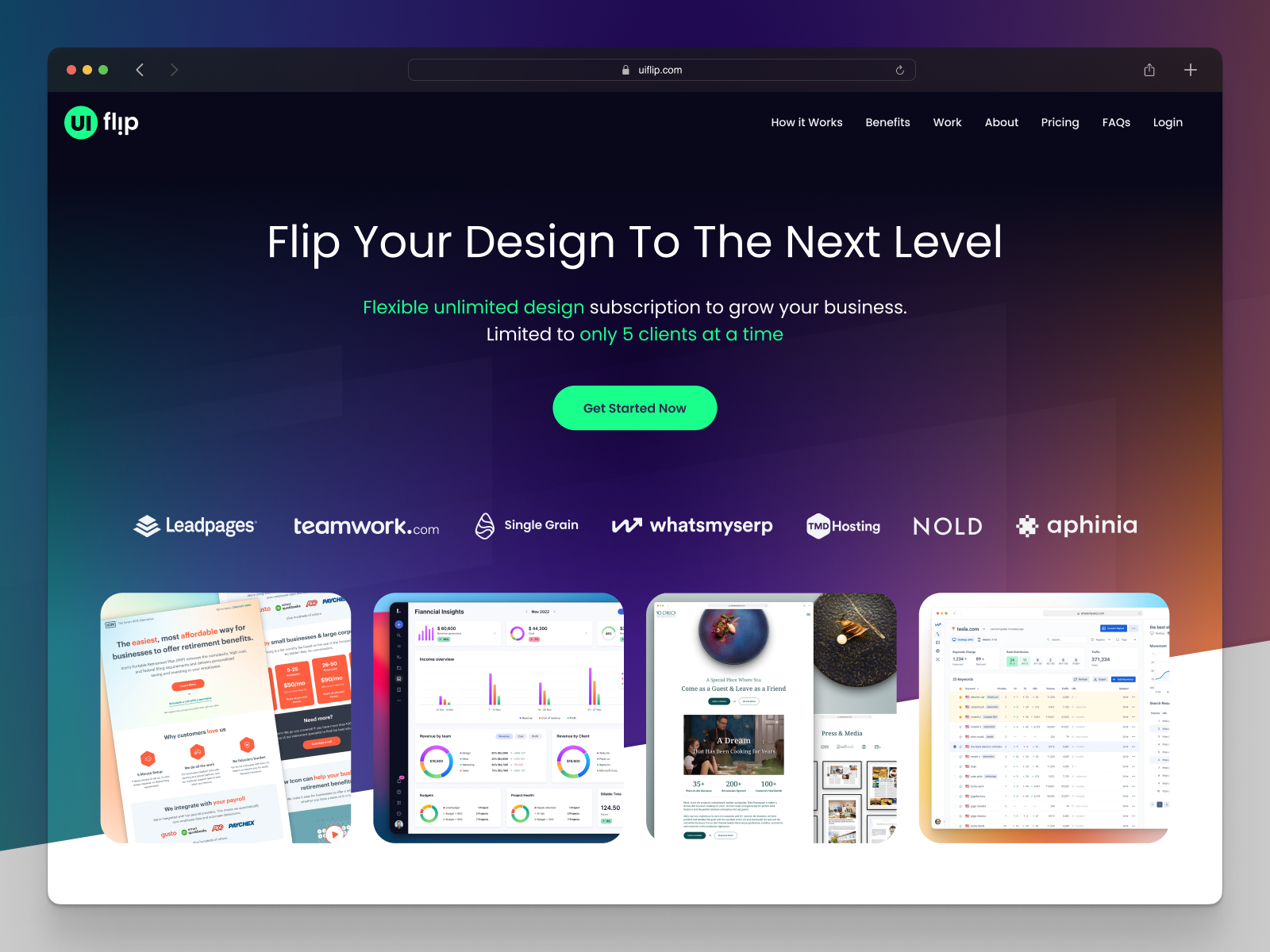
Table of Contents
The Struggles of Traditional Design Agencies
For many businesses, particularly startups and those with fluctuating design needs, traditional design agencies often present challenges. Here’s a breakdown of some common hurdles:
- High Upfront Costs: Retainer fees and project-based pricing can be a significant financial burden for businesses, especially with uncertain design requirements.
- Inflexible Timelines: Locking into lengthy project timelines can hinder agility and responsiveness to market changes.
- Limited Communication: Communication breakdowns between designers and clients can lead to missed expectations and revisions, further extending timelines and costs.
- Finding the Right Fit: Aligning with the perfect design agency requires extensive research and vetting, a time-consuming process.
The Rise of Web Design Subscriptions
Web design subscriptions offer a refreshing alternative to these pain points. Here’s how they transform the design experience:
- Cost-Effective and Predictable Billing: Subscription plans provide a set monthly fee, offering greater budget control and eliminating the guesswork associated with project-based pricing.
- On-Demand Design: Need a banner designed today? A landing page tomorrow? Subscriptions empower you to request designs whenever needed, ensuring agility and responsiveness.
- Simplified Workflow: Subscription platforms streamline the design process. Submit clear briefs, receive your designs within a defined timeframe, and provide feedback for refinements. It’s that easy.
- Variety of Talent: Many platforms offer access to a diverse pool of designers with varying specializations. Find the perfect fit for your project style and brand needs.
The Power of Ease of Use: UI Flip as Your Design Partner
UI Flip exemplifies the user-friendly approach of web design subscriptions. Their platform caters to businesses seeking a smooth and efficient design experience, with a focus on:
- Stupid Simple Design Subscription: Their tagline perfectly captures the essence – UI Flip eliminates design complexities. Choose a plan that suits your needs and start requesting designs in minutes.
- Free Trial: Unsure if a subscription fits you? UI Flip offers a risk-free 3-day trial, allowing you to test the waters and experience their design quality firsthand.
- Pause or Cancel Anytime: Flexibility is key. UI Flip subscriptions aren’t restrictive contracts. You can choose to pause or cancel your subscription whenever needed, providing complete control over your design budget.
- Transparent Communication: From initial brief submission to final design approval, UI Flip prioritizes clear communication. Their efficient platform facilitates seamless interactions between clients and designers.
A Step-by-Step Guide to Using UI Flip’s Subscription Service
Let’s walk through the effortless design workflow offered by UI Flip:
- Start Your Free Trial: No credit card required! Sign up for your free 3-day trial and explore the platform’s user interface.
- Submit Your Design Request: Craft a detailed design brief outlining your project goals, target audience, and desired brand elements. UI Flip provides helpful prompts to ensure your brief is clear and comprehensive.
- Receive Your Design: Within 1-3 business days, your first draft will be delivered through the platform.
- Provide Feedback: Review the design and share your feedback through the built-in review system. UI Flip’s designers are dedicated to client satisfaction, readily incorporating your feedback into revisions.
- Refine Until Perfect: Don’t settle for anything less than your vision. UI Flip offers multiple rounds of revisions until you’re 100% satisfied with the final design.
- Move on to the Next Request: With your first design approved, it’s time to unleash your creativity! Submit your next design request, and let UI Flip handle your ongoing design needs.
The Benefits Extend Beyond Ease of Use
While the user-friendly interface is a significant advantage, UI Flip’s subscription model offers additional benefits:
- High-Quality Designs: Access a talented pool of vetted designers who deliver professional and visually appealing designs.
- Scalability: The subscription model adapts to your design needs. Whether you require a single landing page or ongoing website updates, UI Flip scales with you.
- Faster Turnarounds: Subscription platforms like UI Flip prioritize efficient workflows. You can expect quicker design turnaround times compared to traditional agencies, allowing you to launch projects and updates faster.
- Dedicated Support: Many subscription platforms offer dedicated support teams to assist you with any queries or challenges throughout the design process.
- Peace of Mind: Knowing you have a reliable design partner by your side provides peace of mind. Subscription services cater to ongoing design needs, ensuring your website and marketing materials remain fresh and relevant.
- Is a Web Design Subscription Right for You?
Web design subscriptions offer a compelling solution for businesses seeking:
- Cost-effective and predictable design expenses.
- On-demand design services for a fluid workflow.
- A user-friendly platform for seamless communication and collaboration.
- Access to a pool of talented designers who can adapt to your brand vision.
However, subscription models may not be the ideal choice for:
- Businesses with highly complex and specialized design needs.
- Those seeking a deep and long-term partnership with a single design agency.
Conclusion: Embrace the Design Revolution
The landscape of web design services is undergoing a dramatic shift. Web design subscriptions like UI Flip are revolutionizing the way businesses access high-quality design. With their user-friendly platforms, predictable costs, and on-demand design services, these platforms empower businesses of all sizes to unleash their creative potential and maintain a visually appealing online presence. If you’re tired of the limitations of traditional agencies and crave a more agile and accessible design solution, consider exploring the world of web design subscriptions. You might just discover the perfect partner to unlock your brand’s full potential.
9 Types of Business Video
Are you using the right kind of videos in your business?
Video marketing is a great way to promote your brand, market and advertise your products, and improve your SEO results for the utmost online visibility. Videos are powerful, cost-effective, and important to your overall marketing strategy, enabling you to engage, captivate, compel, and convert your target audience!
Table of Contents
The Power of Video for Marketers
The average person watches one to two hours of online video content every day – which, when you think about it, is huge! From YouTube videos to social media reels, on-page website videos, and more, video is a very powerful way to capture the attention of consumers. This is why, in 2024, more than 90% of professional marketers are using video to underpin their online campaigns and marketing/advertising strategies.
Why is video so popular amongst audiences? That’s easy!
- Videos are passively consumed … they don’t require much effort at all.
- They are more engaging than audio
- They are easier to take in than reading text
- They are incredibly effective for engaging audiences.
- More people now prefer to watch online videos than television
- Videos posted on social media are shared twelve times more than images and text-based posts
6 Types of Business Video
Commercial video production refers to creating and distributing videos for an audience of your business’s patrons or customers. Which type of video is right for your business?
If you’re creating videos specifically for consumers, consider these types:
- Product Showcase: these videos highlight the qualities and benefits of new or existing products or services. Videos need to be professional, eye-catching, and polished with the primary goal of converting prospects.
- How-To’s: explainer videos that show consumers why they should buy your product or service. They include demonstrations of how to use a product or access services, and they also help build credibility and trust in your brand.
- Promotions: these videos are based around a specific call to action. This includes encouraging the target audience to buy a product, sign up for a service, subscribe to a newsletter, donate or otherwise support an initiative, etc.
- Testimonials: audiences, especially those online, need to know who they are spending money with and what they are buying. Real-life, genuine reviews make a huge difference, and video testimonials from real customers are more believable than written, faceless ones.
- Social Media: short videos created for posting on Instagram Reels, TikTok, Facebook Stories, and YouTube shorts are fast and appealing to audiences who often have limited attention spans.
- Company Culture: take your branding to the next level and show its human side, including who you are, what you stand for, and what sets you apart from your competition. Include team interviews and behind-the-scenes sneak peeks.
Conclusion!
Commercial video production providers offer fantastic options and services for business owners and marketers. Choose the services of a professional, experienced video marketing company or boutique agency for the best results – and say hello to a new level of engagement with your business and brand!
Brand Awareness Marketing: What You Should Know
Table of Contents
Is your brand easy to recognise and remember?
Brand awareness is essential for business success – no matter what industry, sector, or niche you occupy and whether you’re a large or small business – or even a sole trader.
What is brand awareness?
Put simply, it is the instant familiarity consumers have with a brand and its offering. Executed right, it embeds the brand into their psyches and consciousness, conveying how it serves their lifestyles, needs, and shopping habits. Ultimately, brand awareness compels target consumers to hop on board with the brand and its products, services, and story.
Examples of brands with outstanding brand awareness include:
- Apple
- Coca Cola
- Nike
- Delta
- Microsoft
- Chanel
- KFC
Brand Awareness Marketing
Brand awareness marketing is a strategy that businesses implement to familiarize consumers with their product or service. It is an ongoing, long-term strategy that boosts a brand’s reputation and recognition. It needs to reflect, inform, and convey the brand’s unique identity, products and/or services, communications and customer service approach, and sales themselves. Executed well, it gives your business and its offering a face and underpins the authenticity of your stories.
Your Strategy
You need to decide how you want consumers to perceive your brand; this could be sophisticated, whimsical, energetic, luxurious, welcoming, accessible, youthful, relatable, affordable, or sustainable.
The key aspects of a brand marketing campaign include:
- Developing the brand’s identity/image: its values, goals, tone, symbology, story, colour scheme, logos, fonts, packaging, and more.
- Boosting awareness to make it recognisable and memorable. Clearly let consumers know who you are, what you offer, and who your target customer is.
- Building trust and loyalty amongst your existing and future customer base.
- Generating leads from your customers, fans, and followers, who will recommend and share your stories on your behalf.
- Increasing engagement and encouraging consumer interaction via website visits; social likes, follows, comments, and shares; in-store visits and enquiries; conversions; and product reviews.
These marketing activities should be ongoing, but there are certain times when it is particularly important. These include when you are launching a new business, adding new services or products, undergoing new ownership or rebranding, and targeting/educating new prospects.
Tips to Build Brand Awareness
- Give your brand a personality through humanisation.
- Choose a memorable brand image using colour psychology and symbolism.
- Compose a catchy slogan.
- Tell stories to resonate with your target audience and that reflect your brand identity.
- Foster and participate in two-way social conversations.
- Make your content easy to share.
- Compose and create high-quality, original, and engaging text- and image-based content, including brand videos.
- Sponsor events, a local youth sports team, etc.
- Consider a comprehensive SEO campaign to drive organic traffic to your business website.
Campaign types include:
- Pay-per-click (PPC) advertising on Google
- Sponsored posts / paid ads on social media
- Paid ads on YouTube
- Guest blog posting
- Podcasts/radio campaigns
Your brand awareness campaign strategy can be simple or complex – and there is an effective way to achieve this that suits any budget.
Conclusion
Brand awareness marketing is an effective way to help create and cement positive brand associations in the consumer psyche and is an important part of establishing a brand that the targeted consumers spontaneously recognise and remember. From social media marketing to SEO, commercial video production to blogging, and much more, investing in this type of branding and marketing strategy will pay big dividends for your business if you do it well.
Unlocking Convenience with 이지틴상품권 (EZ-Tin Gift Voucher)
In the bustling world of e-commerce, the notion of gift-giving has evolved significantly. No longer confined to physical stores or limited by geographical boundaries, the digital realm offers a plethora of options for both givers and receivers. Among the innovative platforms catering to this modern trend is 이지틴상품권 (EZ-Tin Gift Voucher), a Korean website revolutionizing the way we buy and sell various gift cards and vouchers.
Operating seamlessly in Korean and targeting users in South Korea, 이지틴상품권 specializes in facilitating the exchange of gift vouchers from popular brands like Shinsegae, Lotte, and many others. But what sets this platform apart? Let’s delve into the advantages it offers and how it simplifies the management of unused gift cards.
Table of Contents
Convenience Redefined: The Advantages of Gift Card Exchange
Gift cards have become a staple in modern gift-giving for good reason. They offer flexibility to the recipient, allowing them to choose the perfect item according to their preferences. However, what happens when you receive a gift card for a store you rarely frequent or for a brand you’re not particularly fond of? This is where gift card exchange platforms like 이지틴상품권 come into play.
By facilitating the buying and selling of gift vouchers, 이지틴상품권 empowers users to convert unused or unwanted gift cards into value for brands they love. This not only ensures that the gift doesn’t go to waste but also allows individuals to make the most of their gifting experience.
Managing Unused Gift Cards: A Prudent Approach
We’ve all been there – receiving a gift card with the best intentions but forgetting about it until it’s nearing expiration. According to research, billions of dollars in gift card value go unused every year. 이지틴상품권 provides a solution to this common dilemma by offering a platform where users can manage their gift cards effectively.
Through the website’s user-friendly interface, individuals can keep track of their gift card balances, set reminders for expiration dates, and even trade them for vouchers they’re more likely to use. This proactive approach not only maximizes the value of gift cards but also ensures that no gift goes unappreciated.
Safely Trading Gift Vouchers Online: Tips for Peace of Mind
When it comes to online transactions, security is paramount. 이지틴상품권 understands the importance of safeguarding users’ information and employs stringent measures to ensure a secure trading environment.
For users looking to buy or sell gift vouchers on 이지틴상품권, here are a few tips to enhance security:
- Verify the Seller/Buyer: Before proceeding with a transaction, take the time to verify the identity and reputation of the other party. Look for reviews or ratings to gauge their reliability.
- Use Secure Payment Methods: Opt for secure payment methods that offer buyer protection, such as PayPal or credit cards. Avoid sharing sensitive information like bank account details directly.
- Read the Fine Print: Familiarize yourself with the terms and conditions of the transaction, including any fees or restrictions associated with buying or selling gift vouchers.
- Report Suspicious Activity: If you encounter any suspicious behavior or fraudulent listings, report them immediately to the platform administrators.
By following these guidelines, users can trade gift vouchers on 이지틴상품권 with confidence, knowing that their transactions are conducted in a safe and secure manner.
Conclusion
In a world where convenience reigns supreme, platforms like 이지틴상품권 are a testament to the evolving landscape of gift-giving. By offering a seamless solution for buying, selling, and managing gift vouchers, 이지틴상품권 empowers users to make the most of their gifting experience while minimizing waste.
Whether you’re looking to exchange an unused gift card, manage your gift card portfolio more efficiently, or trade gift vouchers securely online, 이지틴상품권 provides the tools and resources to help you unlock convenience at every turn. Experience the future of gift-giving with 이지틴상품권 today!
Mastering Bulk Traffic: Tips to Maximize Its Benefits
Table of Contents
Introduction
Start with an engaging hook. It should capture the fast-paced world of digital marketing. The immense importance of web traffic. In this vibrant landscape, the term “definition bulk traffic” emerges. It highlights the high website visit volumes. These visits are crucial for online businesses and websites. The article is set to unravel the mysteries of bulk traffic. It will explore practical techniques to use this phenomenon for growth. This will show its key role in digital marketing.
Understanding Bulk Traffic
-
Bulk traffic is large volumes of website visits. They are usually bought in packages from traffic-generating services. Contrast it with organic traffic to provide a clearer picture.
-
Sources and Nature: Discuss where bulk traffic comes from. This includes paid ads, social media blasts, and traffic-buying platforms. Mention the diversity in quality, from high-value visitors to less-engaged ones.
The Merits and Drawbacks of Bulk Traffic
-
The advantages are greater website visibility. Testing website elements is faster. It has the potential to boost other metrics.
-
Discuss the risks of low-quality traffic. These risks include high bounce rates and minimal engagement. They could harm SEO rankings.
Middle: Strategic Deployment and Real-World Examples
-
How to Maximize Value. Offer strategies to get the most out of bulk traffic. They include targeting the right audience. They must make sure the website is ready and set clear objectives.
-
Use analytics. Dive into how tools like Google Analytics can track traffic and analyze the impact of bulk traffic on your website. Include instructions on how to set up specific tracking for paid traffic campaigns.
-
Here are some real examples. They show how businesses use bulk traffic to reach goals. For example, increasing newsletter signups or boosting event attendance.
The Role of Content and Engagement
-
Create relevant content. Stress the need for engaging, valuable content on landing pages. Direct bulk traffic sources to them. Explain how this can improve conversion rates and overall ROI.
-
Website design and user experience are critical. They keep visitors from bulk traffic and turn them loyal users or customers.
Ethical Considerations and Best Practices
-
Choosing Providers. Discuss the importance of picking good bulk traffic providers and the red flags to watch for.
-
Bulk traffic should add to, not replace, organic growth. Emphasize ethical practices. Avoid any black hat techniques, as they could harm the website’s reputation.
Conclusion: Crafting a Balanced Traffic Strategy
-
Recap the main points covered in the article. It reinforces the importance of understanding and using bulk traffic well.
-
Encourage readers to consider bulk traffic as part of a larger web traffic strategy. Emphasize the value of balance. It’s a choice between fast gains from lots of traffic and lasting growth from organic traffic.
-
Continual Learning and Adaptation show the need to stay informed. They are about digital marketing trends. Use resources like Moz for SEO tips and Wikipedia for basics.
This outline provides a complete plan. It will help you write an engaging article on bulk traffic. Each section builds on the last. They take the reader from the basics to using bulk traffic for their website. They focus on ethical practices and strategic planning for growth.
The Truth About Instagram Views: What You Need to Know
Unlock Your Website’s Potential with SparkTraffic
Are you looking for a way to maximize the potential of your website? Are you looking for an effective and reliable way to optimize your website’s traffic? If so, then SparkTraffic is the answer. SparkTraffic is a revolutionary platform that helps you optimize your website’s traffic in the most efficient and effective way possible.
SparkTraffic works by leveraging the power of artificial intelligence (AI) and machine learning (ML) to analyze and optimize your website’s traffic. It analyzes your website’s content, keywords, and other factors that affect your website’s performance. It then uses AI and ML algorithms to determine which pages are performing well and which ones need improvement. With this information, SparkTraffic can provide you with detailed recommendations on how to improve your website’s performance.
Understanding Multi-Touch Attribution: The Key to Unlocking Your Marketing ROI
As a marketer, you are constantly striving to understand the impact of your marketing efforts and optimize your return on investment (ROI). One of the most effective ways to achieve this is through multi-touch attribution. In this article, we will delve into the world of multi-touch attribution, exploring what it is, why single source attribution is not enough, the different types of multi-touch attribution models, and the benefits of using these models in your marketing strategy.
Table of Contents
What is Multi-Touch Attribution?
Multi-touch attribution is a methodology that allows marketers to assign credit to multiple touchpoints in a customer’s journey, giving them a holistic view of how each interaction contributes to a conversion. Unlike single source attribution, which only attributes the conversion to the last click attribution, multi-touch attribution considers the entire customer journey, from the first touchpoint to the final conversion.
Why Single Source Attribution is Not Enough
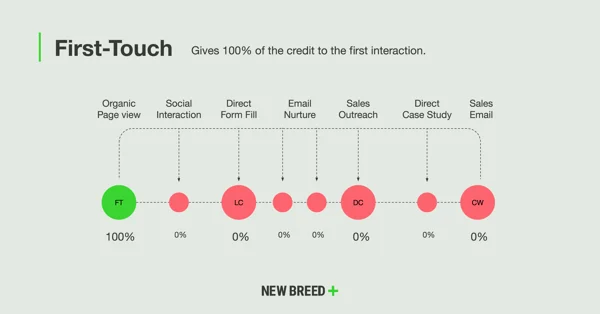
Single source attribution, while simpler to implement, fails to capture the complexity of today’s customer journeys. In the digital age, customers interact with multiple touchpoints across various channels before making a purchase decision. By relying solely on the last touchpoint, you are disregarding the impact of other touchpoints that played a crucial role in influencing the customer’s decision.
Types of Multi-Touch Attribution Models
There are several types of multi-touch attribution models, each with its own strengths and weaknesses. The most common models include:
Linear Attribution: This model assigns equal credit to each touchpoint in the customer journey. It provides a fair representation of the contribution of each touchpoint but may not accurately reflect the actual influence of each interaction.
Time Decay Attribution: In this model, the touchpoints closer to the conversion receive more credit than those further back in time. It acknowledges the diminishing influence of earlier touchpoints but may overlook the importance of initial interactions.
Position-Based Attribution: Also known as the “U-shaped” model, this approach assigns 40% of the credit to the first and last touchpoints, with the remaining 20% distributed among the intermediate touchpoints. It recognizes the significance of both the first and last interactions in the customer journey.
Algorithmic Attribution: This model utilizes machine learning algorithms to assign credit to touchpoints based on their actual impact on conversions. It offers a more advanced and accurate assessment of touchpoint influence but requires substantial data and technical expertise.
Understanding the Differences between Single Source Attribution and Multi-Touch Attribution Models
The fundamental difference between single source attribution and multi-touch attribution models lies in the scope of analysis. Single source attribution only considers the last touchpoint, while multi-touch attribution takes into account all touchpoints in the customer journey. By adopting multi-touch attribution, you gain a deeper understanding of the customer’s decision-making process and can make data-driven decisions to optimize your marketing efforts.
Benefits of Using Multi-Touch Attribution Models
Implementing multi-touch attribution models in your marketing strategy offers several key benefits:
1. Holistic View of the Customer Journey
Multi-touch attribution provides a comprehensive understanding of how customers interact with your brand across various touchpoints, enabling you to identify patterns and optimize your marketing mix accordingly.
2.Optimized Resource Allocation
By accurately attributing credit to touchpoints, you can allocate your marketing attribution resources more effectively, focusing on the channels and strategies that drive the most significant impact.
3. Improved ROI
With a clearer understanding of the customer journey and optimized resource allocation, multi-touch attribution helps maximize your marketing ROI by eliminating wasteful spending and driving conversions more efficiently.
Common Challenges and Limitations of Multi-Touch Attribution
While multi-touch attribution is a powerful tool, it also comes with its fair share of challenges and limitations. Some of the common hurdles include:
Data Collection and Integration: Implementing multi-touch attribution requires access to accurate and comprehensive data from various sources. Ensuring data quality and integrating data from disparate systems can be a complex and time-consuming process.
Attribution Complexity: With multiple touchpoints and interactions to consider, determining the exact credit for each touchpoint can be a challenging task. Different attribution models may yield different results, making it essential to choose the most suitable model for your business.
Lack of a Universal Standard: Unlike single source attribution, which provides a straightforward approach, multi-touch attribution does not have a universally accepted standard. Each business must tailor their approach to suit their specific needs and objectives.
Tools and Software for Implementing Multi-Touch Attribution
Several tools and software solutions are available to simplify the implementation of multi-touch attribution. These tools offer features such as data collection, visualization, and modeling, making it easier for marketers to analyze and understand the impact of each touchpoint. Some popular multi-touch attribution tools include:
Google Analytics: Google Analytics provides a range of attribution models and reporting capabilities to help you gain insights into your customer’s journey.
Adobe Analytics: Adobe Analytics offers advanced attribution capabilities, allowing you to create customized models and track customer interactions across different channels.
Marketing Automation Platforms: Many marketing automation platforms, such as HubSpot and Marketo, offer built-in multi-touch attribution functionality, making it seamless to implement and analyze your attribution data.
How to Implement Multi-Touch Attribution in Your Marketing Strategy
Implementing multi-touch attribution in your marketing strategy involves a systematic approach. Here are the key steps to get you started:
Define Your Goals: Clearly define your marketing objectives and the metrics you want to track. This will help you align your attribution model with your business goals.
Choose the Right Attribution Model: Select an attribution model that aligns with your business needs and provides the most accurate representation of touchpoint influence.
Collect and Integrate Data: Gather data from various sources, ensuring its accuracy and completeness. Integrate data from different systems to create a unified view of the customer journey.
Analyze and Optimize: Utilize the insights gained from multi-touch attribution to optimize your marketing efforts. Identify underperforming touchpoints and reallocate resources to maximize impact.
Conclusion and Key Takeaways
Understanding multi-touch attribution is essential for unlocking the full potential of your marketing ROI. By moving away from single source attribution and embracing multi-touch attribution models, you gain valuable insights into the customer journey, optimize resource allocation, and improve your overall marketing effectiveness. While multi-touch attribution may present challenges, leveraging the right tools and taking a systematic approach can help you overcome these hurdles and drive success.
Implementing multi-touch attribution requires careful planning, data integration, and analysis. By following the steps outlined in this article, you can confidently incorporate multi-touch attribution into your marketing strategy and unlock the true power of your marketing efforts.
Key Takeaways
- Multi-touch attribution considers all touchpoints in the customer journey, providing a holistic view of their interactions.
Single source attribution fails to capture the complexity of customer journeys and overlooks the impact of earlier touchpoints. - There are several types of multi-touch attribution models, including linear, time decay, position-based, and algorithmic.
Multi-touch attribution offers benefits such as a comprehensive view of the customer journey, optimized resource allocation, and improved ROI. - Implementing multi-touch attribution comes with challenges, including data collection, attribution complexity, and the lack of a universal standard.
- Tools and software solutions, such as Google Analytics and Adobe Analytics, can assist in implementing and analyzing multi-touch attribution.
 socialhead
socialhead
